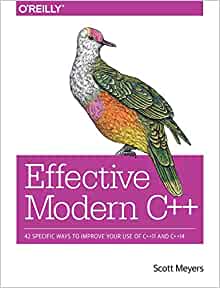PiZero – Is it a Zero or Hero
Sunday, December 6th, 2015On 26th November the Raspberry Pi foundation announced the release of the PiZero, a $5 computer based upon the Broadcom 2835 processor. Looks like it could be interesting…
First Impressions
The board itself is about 60% the size of a credit card and has a reduced number of input output options compared to the other Raspberry Pis in the range but promises more processing power than the original Raspberry Pi. A quick look at the specifications reveals the following:
- Broadcom BCM2835 processor (1GHz ARM11 core – 40% faster than the original Raspberry Pi)
- 512MB of SDRAM
- A micro-SD card slot
- A mini-HDMI socket
- Micro-USB sockets, one for data and one for power
- An unpopulated 40-pin GPIO header (Identical to the Model A+/B+/2B)
The form factor and price combined are sure to make this ideal for the hobby/hacker market.
Extras
Some hobbyists are sure to have the additional connectors in their parts bucket, but not this one, every other cable you can think of but not the OTG or HDMI convertor! Over the years I have collected a fair number of cables and other spare parts but none are suitable for the PiZero. The micro-SD cards I have in abundance but the additional connectors needed to start work are another matter. In hindsight I should have ordered the additional cables when purchasing the PiZero from Pimoroni as these were on offer for £8 at the time of ordering.
Hindsight is a wonderful thing…
The PiZero arrived in short order, the accessories were another matter. It is not often that Amazon let me down but this was one of those times. A small pause while waiting for delivery.
Setting up the PiZero
Setting up the PiZero was as simple as the initial setup for the rest of the Raspberry Pi family. The easiest option is to use NOOBS. This just needs a formatted SD card, 16GB should do it.
Formatting the SD card and dropping NOOBS on the card took about 5 minutes, now time to finally power on the Raspberry Pi. But first a few connections, the HDMI was connected through a standard HDMI cable through a convertor to the the mini-HDMI. My USB hub was connected through an ingenious USB OTG Convertor. Keyboard, trackball and WiFi dongle were added to the hub. We’re now ready to go.
NOOBS starts to the desktop by default and so the mini-HDMI connection is essential. The board started reasonably quickly although users of the Raspberry Pi B+ etc will find the start up a little slow.
The first things NOOBS did was to reorganise the file store, this takes about 30 minutes.
The next step, booting to the desktop and the first thing to do, configure the system to boot to the command line and setup the network settings for the WiFi.
And then reboot.
One hour after starting the process I had a PiZero on the network connecting to the command line via SSH.
Conclusion
The PiZero created a fair amount of excitement at work but for what are probably the wrong reasons. The initial excitement about the $5 price tag soon starts to wane when you start buying the add-ons. Don’t get me wrong this board has a purpose, this is a fine low cost hackers board. My concern is the number of people thinking that this is a low cost home computer for the family. If you want a low cost family Raspberry Pi then buy the Raspberry B2/B+ as these will be far easier to connect to the kit most families are likely to have in the home.
So where does the PiZero fit in. Well I think this is really a good fit for the market the compute module market. The compute module was always going to be a pain to work with for the hobbyist and the full Raspberry Pi is too large for some applications (quadcopters etc). The PiZero fits nicely into this market. Getting the additional components (OTG cables etc) is a one off cost for the hobbyist embedding a PiZero into a project. This is where I think this board will fit nicely.
So, in conclusion, great for the hobbyist hacker but for families wanting to get kids into computing I’d go for the Raspberry Pi B2/B+ as it’s going to be far easier to get connected.

